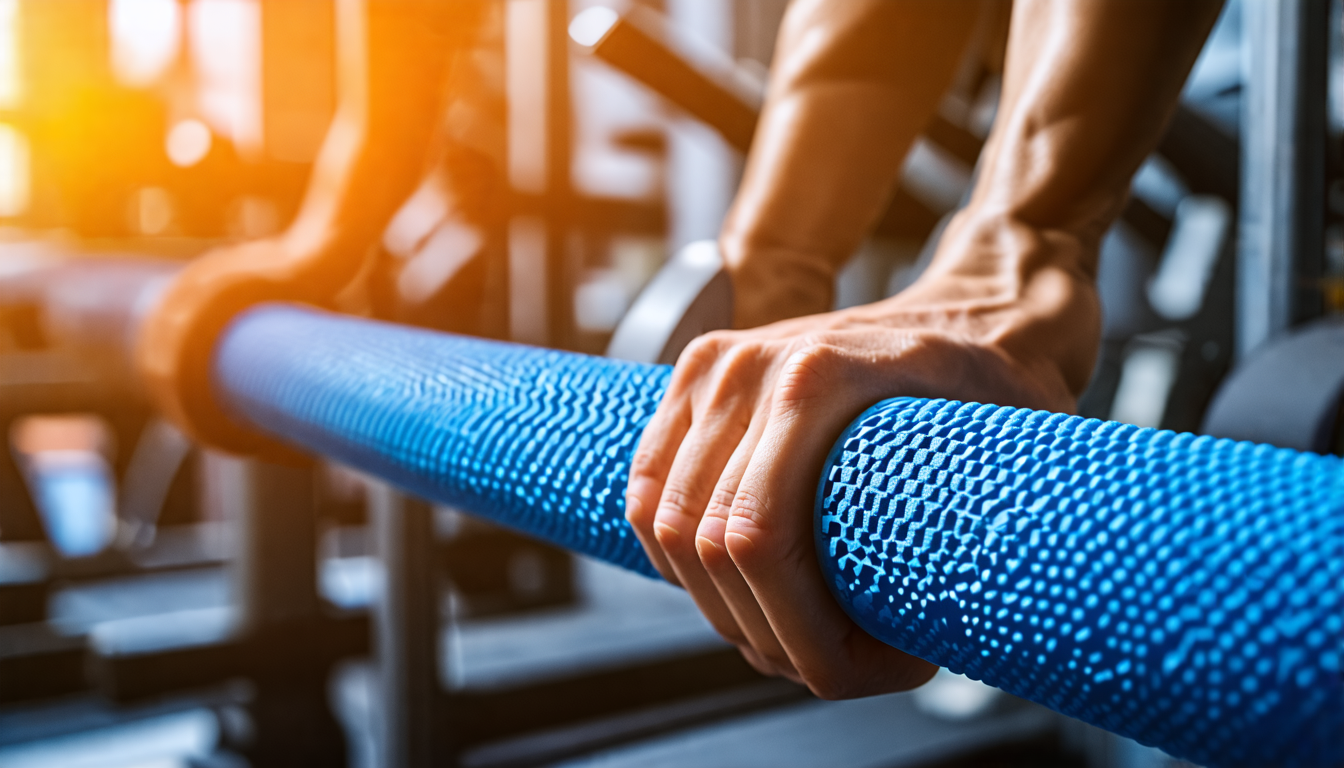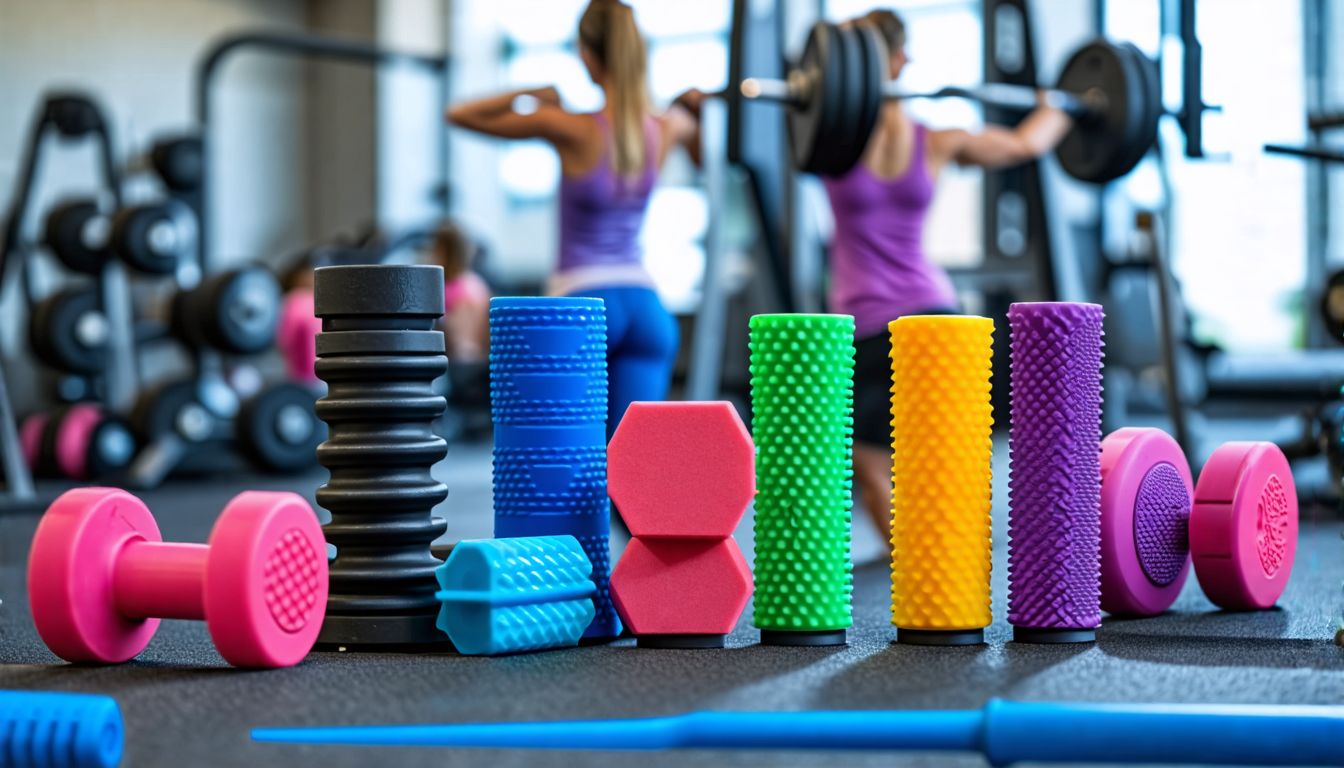Choosing the right grips for your fitness bar is crucial for optimizing your home workout experience and achieving your fitness goals. With the rising popularity of home fitness bars, understanding the variety of grips available and how they influence your exercise routine is essential. Different grip types cater to specific fitness goals, whether you’re focused on strength training, building endurance, or preventing injuries. Standard grips provide a balanced approach suitable for general fitness needs, while narrow grips can enhance your control during more precise movements. On the other hand, wide grips are perfect for targeting broader muscle groups and improving overall strength.
The material of the grip also plays a significant role. Rubber and foam grips offer comfort, cushioning, and excellent moisture control, making them ideal for long sessions in your home gym. Knurled steel grips, known for their durability, provide a solid, non-slip option, essential for heavy lifting. When choosing the right grips for your home fitness bar, consider comfort as it directly impacts your workout performance. A comfortable grip allows you to maintain form and focus, reducing the risk of injury. Additionally, ensure the grips are made from high-quality materials to withstand frequent use while offering superior moisture control, crucial for maintaining optimal equipment performance during intense workouts.
Understanding Different Types of Fitness Bar Grips
When it comes to maximizing your workouts at home with a fitness bar, choosing the right grip is crucial. Different types of grips can significantly influence your performance and comfort during exercises. Let’s delve into the various grip styles available for your home fitness bar, focusing on their materials, and their specific benefits.
Overview of Common Grip Types: Standard, Narrow, Wide
The grip types generally categorize into standard, narrow, and wide, each offering distinct advantages:
- Standard Grip: This is the most commonly used hand placement for various exercises, providing a balanced distribution of weight and stress across the arms and shoulders. Perfect for beginners, it helps in performing general strength training and compound movements like bench presses and squats.
- Narrow Grip: By placing hands closer together, narrow grips emphasize the inner portions of the chest and triceps. This is particularly useful for targeting specific muscles and is favored in exercises such as narrow-grip bench presses or tricep extensions.
- Wide Grip: An excellent choice for engaging the outer muscles of the chest and the back, wide grips are ideal for exercises like lat pulldowns and bench presses. They can be beneficial in enhancing muscle breadth and endurance.
Significance of Material: Rubber, Foam, Knurled Steel
The material of your fitness bar grips plays a pivotal role in your workout experience. Here’s a breakdown of the most common materials used:
- Rubber Grips: Providing an excellent blend of comfort and durability, rubber grips offer a solid hold that can withstand extended use. They are ideal for high-intensity workouts as they reduce slippage even when hands get sweaty, making them perfect for high-repetition exercises.
- Foam Grips: Best known for their cushioning, foam grips are great for those who prioritize comfort. They might not last as long under heavy use but are perfect for lighter, less frequent workout routines aimed at rehabilitation or endurance training.
- Knurled Steel: Designed for those who need maximum grip strength, knurled steel grips feature a textured pattern that ensures a secure hold. This is particularly beneficial for heavy lifting in strength training where hand slippage could detract from performance.
Benefits of Each Type in Relation to Specific Fitness Goals
Each grip type and material aligns with specific fitness objectives, ranging from strength training to injury prevention:
- Strength Training: Knurled steel or rubber grips are optimal for lifting heavy weights, providing the durability and grip strength necessary to maximize power movements without concern for losing grip.
- Endurance: If you focus on high-repetition sets to build stamina, foam grips can offer the comfort needed over longer sessions. Meanwhile, rubber grips ensure your hands stay secure as fatigue sets in.
- Injury Prevention: Selecting grips that reduce strain on the hands and wrists, such as foam or well-padded rubber grips, can help in minimizing the risk of injury. This is crucial for maintaining long-term fitness adherence, particularly if your workouts involve high-volume lifts.
By understanding these variations in grip styles and materials, you can make informed decisions to enhance your home fitness routine. Selecting the appropriate grip for your home fitness bar not only improves workout efficiency but also contributes importantly to your overall exercise experience, enhancing both safety and performance outcomes.

Factors to Consider When Selecting Fitness Bar Grips
When it comes to choosing the right grips for your home fitness bar, several factors can influence your decision. Selecting the right grips is crucial to ensuring comfort, performance, and longevity of your workout equipment. Here, we explore key considerations that can help you make an informed choice that enhances your home gym experience.
1. Importance of Grip Comfort and Its Impact on Workout Performance
Comfort should be one of the primary considerations when selecting grips for your fitness bar. If your grips are uncomfortable, you’re less likely to maintain proper form, which can hinder performance and increase the risk of injury. A comfortable grip ensures that you can hold onto the bar for longer periods, enhancing workout routines that focus on endurance and strength training. For example, if you’re performing pull-ups or chin-ups on a home installation, a grip that suits your hand size and grip strength will enable better performance and consistency.
Furthermore, comfortable grips can help prevent calluses and blisters, which are common when using fitness bars. Grips made from softer materials like rubber or foam can provide a more cushiony feel, whereas knurled steel grips offer a firmer, more secure hold but may be less forgiving over long periods. Evaluate your tolerance for grip material when considering comfort to ensure your fitness sessions remain enjoyable and effective.
2. Material Quality and Its Impact on Durability
Another factor to consider is the quality of the material used in the grips. This has a direct correlation with the durability and lifespan of the product. High-quality materials can withstand the wear and tear of daily usage, especially if your home fitness regime involves regular weightlifting or high-intensity interval training.
Rubber grips provide a good balance between grip and comfort, often lasting longer than foam, which might wear out more quickly under heavy use. Knurled steel, while providing excellent grip for those who prefer a more tactile feel, may require maintenance to prevent rust, especially in humid environments. Identifying grips made from robust, high-quality materials can save you from frequent replacements and potentially hazardous situations from a failing grip mid-exercise.
3. Moisture Control for Optimal Equipment Performance
Maintaining dry grips is crucial to ensuring safety and performance during workouts. Sweaty hands can significantly reduce a grip’s effectiveness, increasing the likelihood of slipping off the bar. This is where moisture control comes into play. Grips with a moisture-wicking design can help maintain a secure hold, prolonging your workout sessions without compromising safety.
Materials such as knurled steel naturally help channel moisture away from the grip surface, whereas rubber and foam may include special textures to assist with this problem. Some grips may even offer additional features such as grooves or patterns that explicitly aim to draw moisture away from your hands. Considering the level of moisture control a grip provides can greatly enhance your confidence and performance during intense training sessions, making it a critical factor in your selection process.
In conclusion, selecting the right grips for your home fitness bar involves balancing various factors such as comfort, durability, and moisture control. By weighing these considerations and aligning them with your specific workout needs, you can enhance not only your performance but also your training enjoyment, ultimately bringing you closer to achieving your fitness goals.
Choosing the right grips for your fitness bar is crucial in optimizing your home workout experience. Understanding the different types of fitness bar grips—standard, narrow, and wide—can significantly influence your training outcomes. Each grip type offers distinct benefits tailored to specific fitness goals, whether you’re focusing on strength training, endurance, or injury prevention. The material of the grips also plays an essential role, with options like rubber, foam, and knurled steel each providing unique advantages such as improved grip, comfort, and even moisture control.
When selecting grips for your fitness bar, comfort is paramount. A comfortable grip ensures better workout performance by reducing the likelihood of hand fatigue or blisters, allowing you to maintain focus on your routine. Additionally, considering durability and material quality can enhance the longevity of your equipment, making it a worthwhile investment for your home gym. High-quality materials not only withstand the rigors of intense workouts but also help manage moisture, maintaining an effective grip throughout your session.
Overall, selecting the right grips for your fitness bar involves a careful balance of type, material, comfort, and durability to meet your individual fitness objectives. By taking these factors into account, you can enhance your home fitness setup, ensuring that your workouts are safe, effective, and enjoyable.

